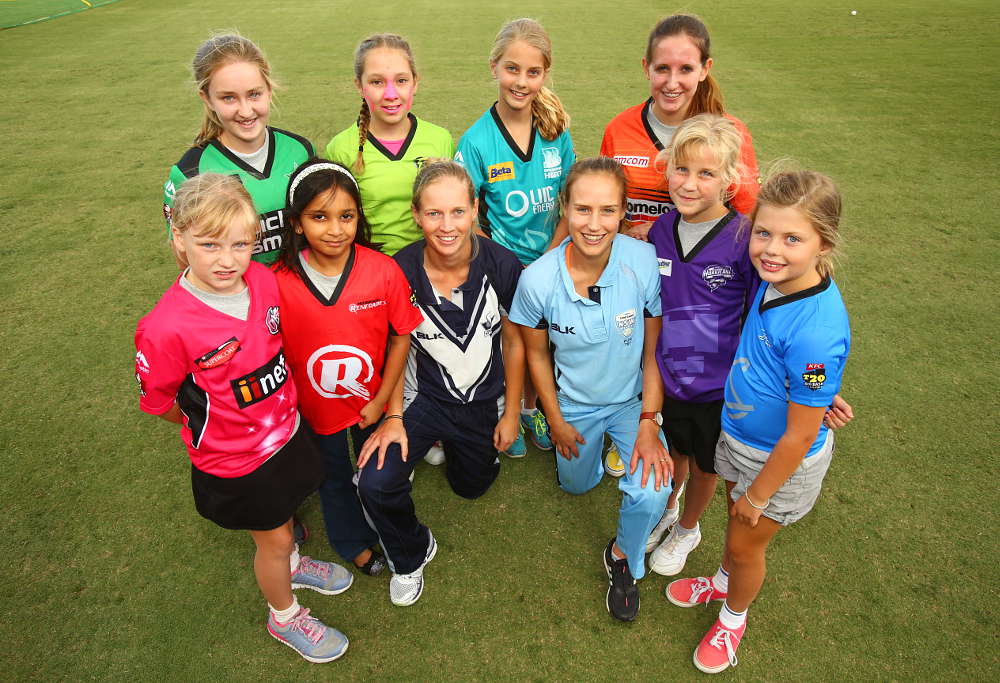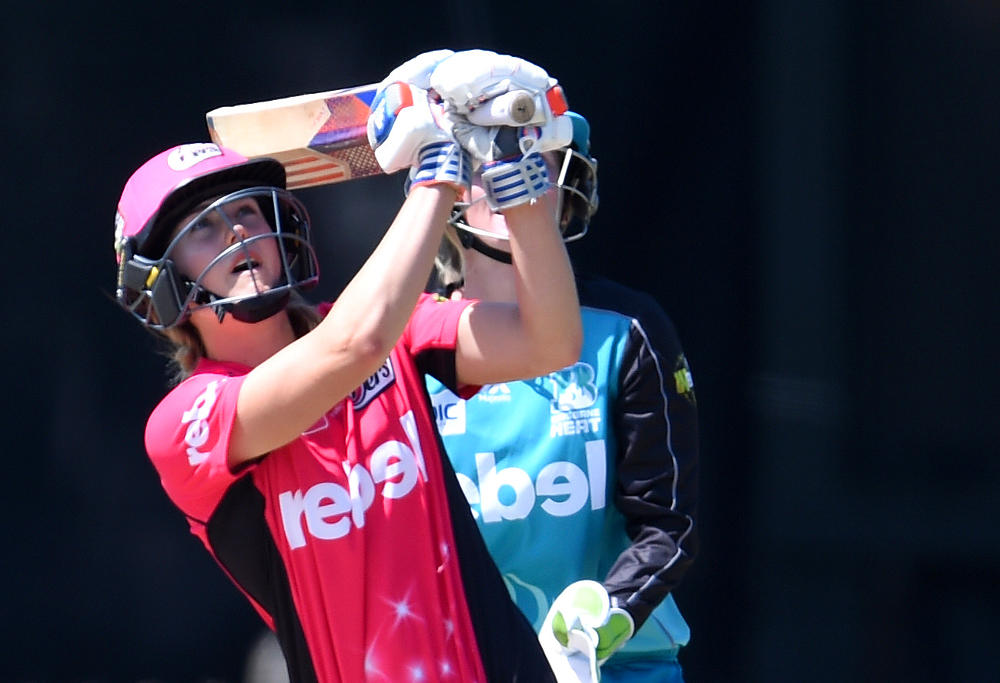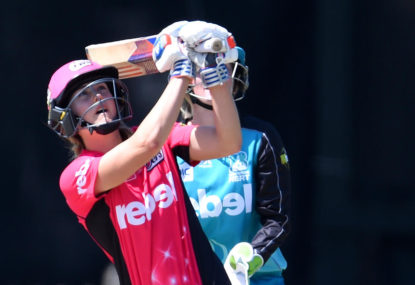On a lazy day in February only last year, the rumours became fact. A Women’s Big Bash League, in some shape or form, would be staged the following season.
The announcement’s timing was discrete, jammed into one of the few rest days during the month-long Cricket World Cup that was unfolding across the country.
It was a tidy bit of public relations – enough detail to show that there was something in the pipeline, yet sufficiently obscure not to have to commit to too much. Anyone that was prone to digging had a men’s World Cup to contend with, and an Australian side en route to the title. Attention was elsewhere.
The hope, or the gamble, was that more substantial plans would fall into place later. Among the top female players, there was widespread scepticism. One international spoke freely within cricketing circles about the frustration of once again putting an off-field career on hold. For what? Another contract to be bound by with inconvenient and unrelenting time commitments, but little in return.
This, after all, was the story of women’s sport to date.
The gamble paid off. At the time, those in charge hadn’t a clue what the plan was, other than it was happening, whatever “it” was.
That there would be eight women’s teams tied to the eight pre-existing men’s franchises had been a source of some contention. In hindsight this seems incredulous – the success of the inaugural WBBL lies largely in having had an existing infrastructure, which was both popular and identifiable, on which to build.

Still, scepticism prevailed. The novelty factor weighed in. Would the momentum last?
Film sequels, as a rule, flop. A good bottle of Bordeaux however, matures with age. On the evidence of the opening week of the second edition of the WBBL, this could be a very fine wine indeed. Last season’s viewing stats hinted that Cricket Australia (CA) were onto a good thing; this year’s might have already confirmed it.
Four of the first eight matches were shown live on free-to-air television, one even on prime time Saturday night, and the other four were live streamed online. Viewing records were smashed, as the peak national audience reached 637,000. For one weekend, Australia was immersed in an unprecedented sea of women’s sport. In stumping up $600,000 in incremental broadcasting costs last year, CA suffered short term loss for long term gain.
It’s not just cricket, either, where this investment approach is catching on. Competition drives productivity, or at least capitalism preaches as much. The launch of AFL Women’s just months ago has served such a purpose.
The Melbourne Stars-cum-Western Bulldogs all-round talent Emma Kearney was quoted earlier this month declaring that cricket was “threatened” by the AFL. It’s soundbites like these that keep the one-upmanship alive; five days later Kearney was bowling live to record-breaking viewers.
In return, a successful WBBL will likely positively impact both the spectators and administrators of the inaugural AFL Women’s season.
The scheduling of the WBBL, of course, has also been key. Not much else was happening last week. The men were in between Test series. In a world where the unexpected is becoming the norm, already there are aspects of the WBBL which are becoming grounded in tradition. The opening games of the tournament are now the de facto curtain raiser for the start of the men’s BBL. The merits in labelling the women’s event as a ‘warm-up’ to the male equivalent can be debated, and there’s a danger the WBBL will be sidelined once the men’s competition starts, but this was always inevitable.
At least now the two come hand-in-hand, and the dynamic within the franchises is beginning to reflect this. Sponsor events, media appearances and everything in between are being fronted by players of both sexes – Meg Lanning or Glenn Maxwell, the punters care not.
The content has changed too. The coverage now centres far more on the cricket itself – Lanning’s catch, Alex Blackwell’s six, Deandra Dottin’s drive. It’s a far cry from hearing of Lanning and Ellyse Perry’s modelling bouts, perched on bar stools in the interval of a men’s Test match. While revelling in viewer figures remains a CA obsession, there has been less triteness around its advocacy, and more of a sense of just getting out there to create a good product.
There is room for improvement. Some on Twitter are frustrated at the amateur nature of the live feed, and more pressingly, some of the players are finding it difficult to manage the increasing expectations of signing along the dotted line. The salaries now are truly in semi-professional territory, but holding down another job to make up the other half demands a flexibility most employers are unwilling to give.
It was recently announced that female contracted players would, for the first time, be included in the collective bargaining negotiations between CA and the Australian Cricketers Association (ACA). Women have been represented by the ACA since 2007, but many had found their voices secondary to the men, or at the very least that the organisation was failing to understand the differing demands of semi-professionalism instead of full-time cricketing employment.

A place at the table is a welcome step, but only, that is, as long as the ACA isn’t scrapped altogether. This is a real danger, now that CA have announced its intention to stop funding the organisation. Win one battle, another arises – progress was never meant to be easy.
There are also just two sub-continental internationals featuring in this year’s tournament. It’s two more than last season, at least. That Harmanpreet Kaur, India’s prize all-rounder, has been dominating proceedings so far for the Sydney Thunder can only encourage both the franchises and the home boards to facilitate further sub-continental signings.
Harmanpreet scored 77 unbeaten runs in the Thunder’s first two matches and has made enough of an impression for Adam Gilchrist to tweet his approval. “A wonderful addition,” the former Australian gloveman remarked, in a thinly veiled plea for more of the same.
Gilchrist’s social media intervention, above all else, might point to the one true barometer of success. Gilchrist, like a few notable others in the men’s professional game, such as Jason Gillespie, Mike Hussey and Mitch Starc (albeit the latter with a vested interest), has long been an unprompted champion of women’s cricket.
The surest sign that the women’s game has made an impact, however, and that it has truly been embraced as a staple of the Australian summer, will be when others, the likes of Steve Smith, David Warner and Kevin Pietersen, start voluntarily voicing their support too. As a matter of course, the Southern Stars watch, comment on and support their male counterparts publicly, often on social media. This is yet to be widely reciprocated.
Frustration remains, as does the cynicism to some degree, but much of it is about creating a culture shift – something which can’t simply be forced. It’s happening – one only need read the outrage at the sensationalist headlines about a supposedly ominous pregnancy clause in CA female contracts to know that there is an audience, and an interest.
Women are becoming part of Australian cricketing culture, and that’s a huge achievement considering the bullish male nature of the sport not all that long ago. But it’s not there yet. Until then, there is work to do.































































































